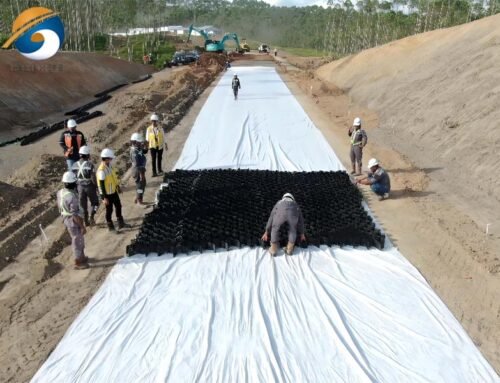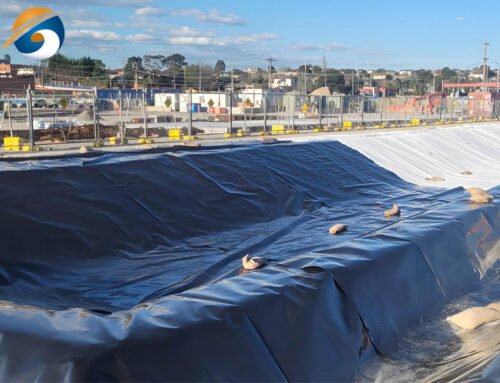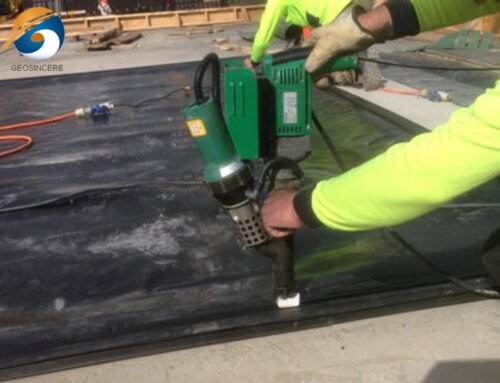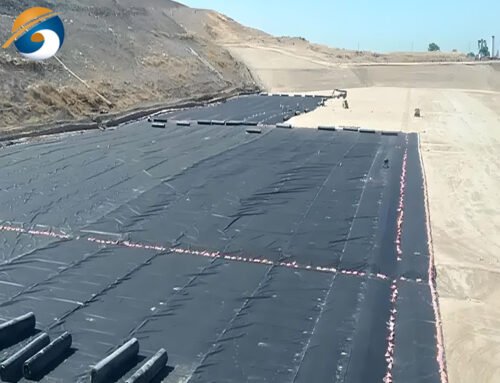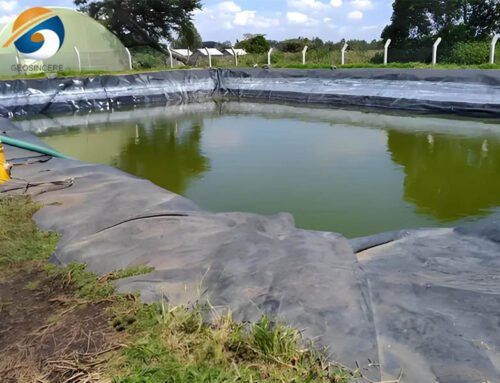A plastic tank liner is a protective layer, typically made of materials like PVC, polyethylene, or polypropylene, used to line the interior of a tank to prevent contamination, corrosion, or leakage. It acts as a barrier, separating the stored liquid or material from the tank’s construction material and protecting it from chemical attacks or other harmful substances.
Plastic Tank Liner is particularly suitable for situations where the soil cannot retain water. In some areas, the sandy soil is filled with a pool of water and leaks out in a short time. In this case, the use of GEOSINCERE anti-seepage membrane is lower in cost than the traditional anti-seepage foundation, and the construction is faster and the later maintenance is more convenient.
1. Function of Plastic Tank Liner :
The main function of Plastic Tank Liner is to prevent water leakage, protect pond water quality, and improve aquaculture benefits. As a waterproof and anti-seepage material, Plastic Tank Liner has many advantages, making it an ideal choice for pond aquaculture projects.
First, Plastic Tank Liner has excellent UV resistance and chemical resistance, which can effectively prevent water leakage for a long time and maintain the stability of pond water quality. This waterproof and anti-seepage property is crucial to protect pond water from pollution, help improve the aquaculture environment, reduce the occurrence of diseases, and increase the yield and survival rate of fish and shrimp. In addition, the use of Plastic Tank Liner also simplifies pond management, such as easy monitoring of the growth and fishing of fish and shrimp, thereby shortening the production cycle and improving economic benefits.
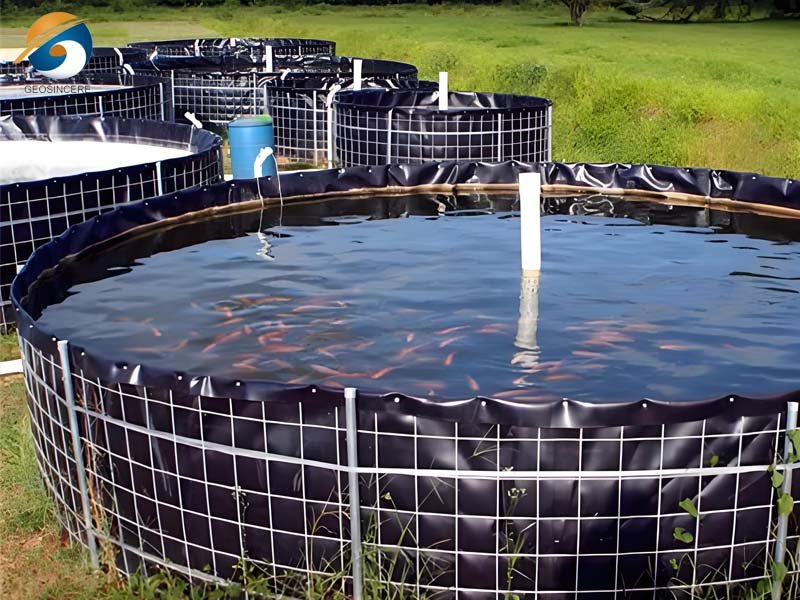
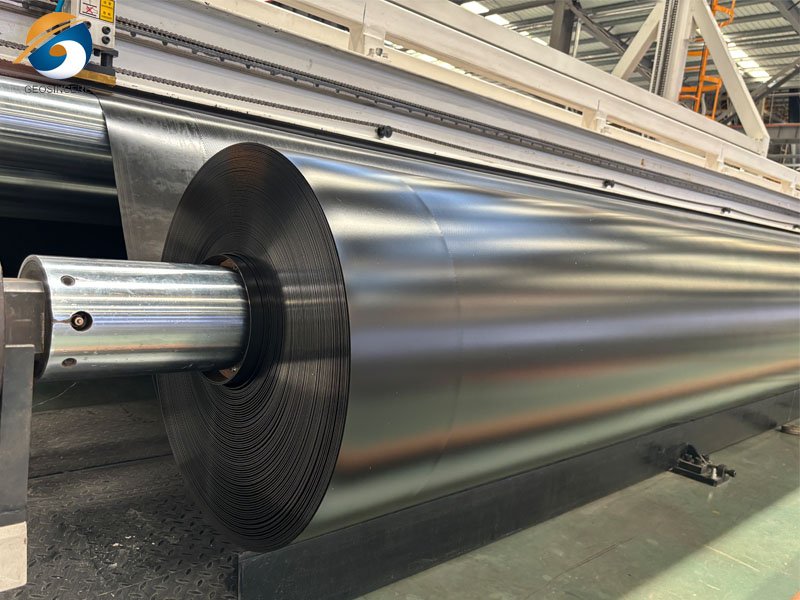
2. How To Choose Right Plastic Tank Liner?
Choosing the right plastic tank liner is crucial for ensuring durability, chemical resistance, and longevity. Here’s a step-by-step guide to help you select the best liner for your needs:
2.1 Plastic Tank Liner – Determine the Purpose of the Tank:
- Water Storage (drinking, irrigation, aquaculture)
- Chemical Storage (acids, fertilizers, fuels, wastewater)
- Agricultural Use (manure, silage, feed storage)
- Industrial Use (mining, oil & gas, processing)
2.2 Plastic Tank Liner – Consider Thickness (Mil/Gauge)
- 20-30 mil (0.5-0.75 mm) – Light-duty (water storage, small ponds)
- 30-40 mil (0.75-1 mm) – Medium-duty (agriculture, aquaculture)
- 40-60+ mil (1-1.5 mm+) – Heavy-duty (chemicals, industrial use)
Thicker liners offer better puncture resistance and longevity.
2.3 Plastic Tank Liner – Check Chemical Compatibility
- If storing chemicals, verify that the liner material is resistant to the specific substances (e.g., acids, solvents, oils).
- Consult a chemical resistance chart before finalizing.
2.4 Plastic Tank Liner – UV & Temperature Resistance
- Outdoor tanks need UV-stabilized liners (HDPE, EPDM).
- High-temperature liquids require PP or RPP liners.
2.5 Plastic Tank Liner – Seams & Welding Quality
- Heat-welded seams are stronger than glued seams.
- Factory-fabricated liners (custom-sized) reduce leaks.
2.6 Plastic Tank Liner – Warranty & Lifespan
- Look for liners with 10-20+ year warranties for long-term use.
- Cheap liners may degrade faster.
2.7 Plastic Tank Liner – Budget & Supplier Reputation
- Compare prices but prioritize quality.
- Buy from reputed manufacturers with good reviews.
2.8 Final Recommendation
- For water storage: HDPE or LLDPE (30-40 mil).
- For chemicals: PP or RPP (40-60 mil).
- For ponds/agriculture: UV-resistant HDPE or EPDM.
In specific applications, Plastic Tank Liner is laid on the bottom of the pond to isolate the pond water from the soil to achieve the purpose of water seepage prevention. This anti-seepage method not only effectively protects the water quality of the pond, but also improves the meat quality of fish and shrimp, because stable water quality is conducive to the healthy growth of fish and shrimp. Especially in places where water resources are relatively scarce, using Plastic Tank Liner for anti-seepage treatment can better utilize limited resources and improve the efficiency and economic benefits of aquaculture production.
3. Advantages of Plastic Tank Liner:
3.1 High anti-seepage coefficient
The anti-seepage membrane has an anti-seepage effect that ordinary waterproof materials cannot match. The HDPE anti-seepage membrane has high tensile mechanical properties. Its excellent elasticity and deformation ability make it very suitable for expanding or shrinking the base surface, which can effectively overcome the uneven settlement of the base surface.
3.2 Chemical stability
The anti-seepage membrane has excellent chemical stability and is currently widely used in aquaculture. Resistant to high and low temperatures, asphalt, oil and tar, acid, alkali, salt and more than 80 strong acid and alkali chemical media corrosion
3.3 Aging resistance
The anti-seepage membrane has excellent anti-aging and UV resistance due to the addition of 2%-3% carbon black in the production raw materials, and can be used naked
3.4 Low cost and high benefit
HDPE anti-seepage membrane uses new technology to improve the anti-seepage effect, but the production process is more scientific and fast, so the product cost is lower than that of traditional waterproof materials. According to actual calculations, the general project using HDPE anti-seepage membrane will save about 30%-50% of the cost
3.5 Fast construction speed
The anti-seepage membrane has high flexibility, with a variety of specifications and laying forms to meet the anti-seepage requirements of different fish ponds. It adopts hot melt welding, with high weld strength, convenient, fast and healthy construction
3.6 Environmental protection –
The materials used in the anti-seepage membrane are all environmentally friendly materials. The anti-seepage principle is ordinary physical changes, and no harmful substances are produced. It is a reasonable choice for aquaculture such as fish ponds, shrimp ponds, and lotus ponds.
4. How to Install a Plastic Tank Liner
Installing a plastic tank liner (geomembrane) correctly is crucial to ensure long-term durability and leak prevention. Whether for water storage, chemical containment, or agricultural applications, proper installation maximizes performance. Below are essential steps and precautions for a successful geomembrane liner installation.
4.1 Site Preparation
-
Surface Cleaning: Remove sharp objects, rocks, roots, and debris to prevent punctures.
-
Smooth Grading: Compact and level the base to avoid wrinkles or stress points.
-
Subgrade Protection: Use geotextile fabric under the liner (if required) for added protection.
4.2 Unrolling & Positioning the Geomembrane
-
Avoid Dragging: Unroll the liner carefully to prevent scratches or tears.
-
Temperature Considerations: Install in moderate weather (10°C–35°C) for easier handling.
-
Allow for Expansion: Leave some slack (1–2%) to accommodate thermal movement.
4.3 Seaming & Welding Techniques
-
Hot Wedge Welding: Best for HDPE & RPE liners, ensuring strong, continuous seams.
-
Extrusion Welding: Ideal for repairs and complex corners.
-
Seam Testing: Conduct air pressure or vacuum tests to confirm seam integrity.
4.4 Anchoring & Securing the Liner
-
Trench Anchoring: Bury the edges in an anchor trench (min. 300mm deep).
-
Mechanical Fasteners: Use batten strips for fixed structures like tanks.
-
Avoid Overstretching: Secure without excessive tension to prevent stress cracks.
4.5 Post-Installation Inspection
-
Visual Check: Look for wrinkles, misalignments, or damage.
-
Leak Detection: Perform spark testing (for conductive liners) or flood testing.
-
Protective Cover: Add a geotextile or soil layer if exposed to UV or abrasion.
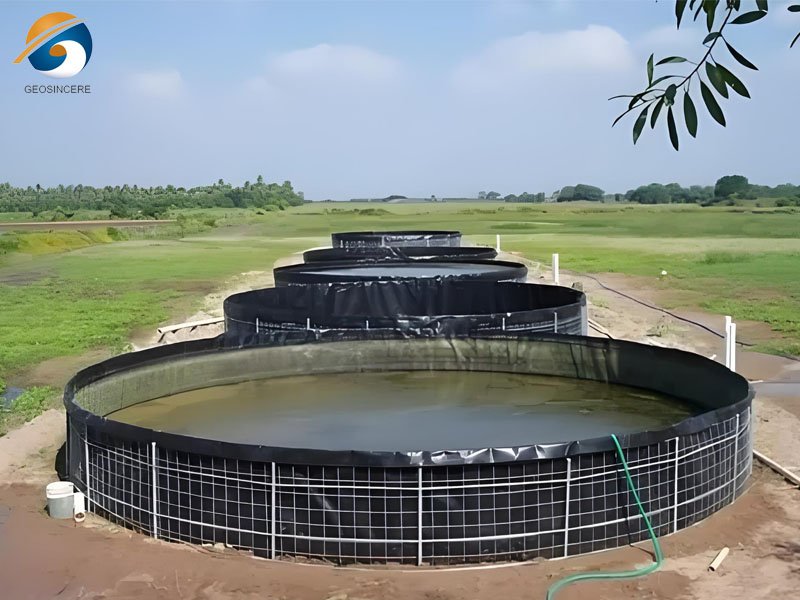
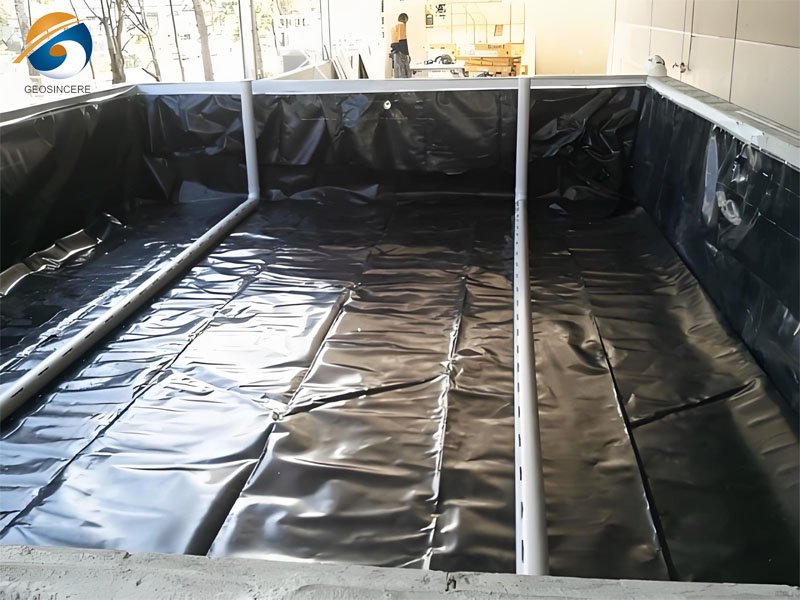
5. Choose a reliable supplier to quote price for you :
GEOSINCERE has been keeping on investing in technological innovation, manufacturing facilities improvement and turnkey engineering abilities. We have invested 10 million dollars into our manufacturing factory which is equipped with state-of-the-art automatic production lines to manufacture high quality HDPE geomembranes and other geosynthetics with optimized processes. Our extensive lines of geosynthetics products are well known for their ensured quality, high performance, excellent durability and best cost effectiveness.
GEOSINCERE brand HDPE geomembranes and other geosynthetics products and solutions can meet your requirements by our solid technologies, innovative engineering solutions and excellent customer services. GEOSINCERE always tries our best to solve the most complex civil, mining and environmental challenges with our innovative and high performance geosynthetic products. Quality assurance, factory price and fast delivery time are our competitive advantages.

